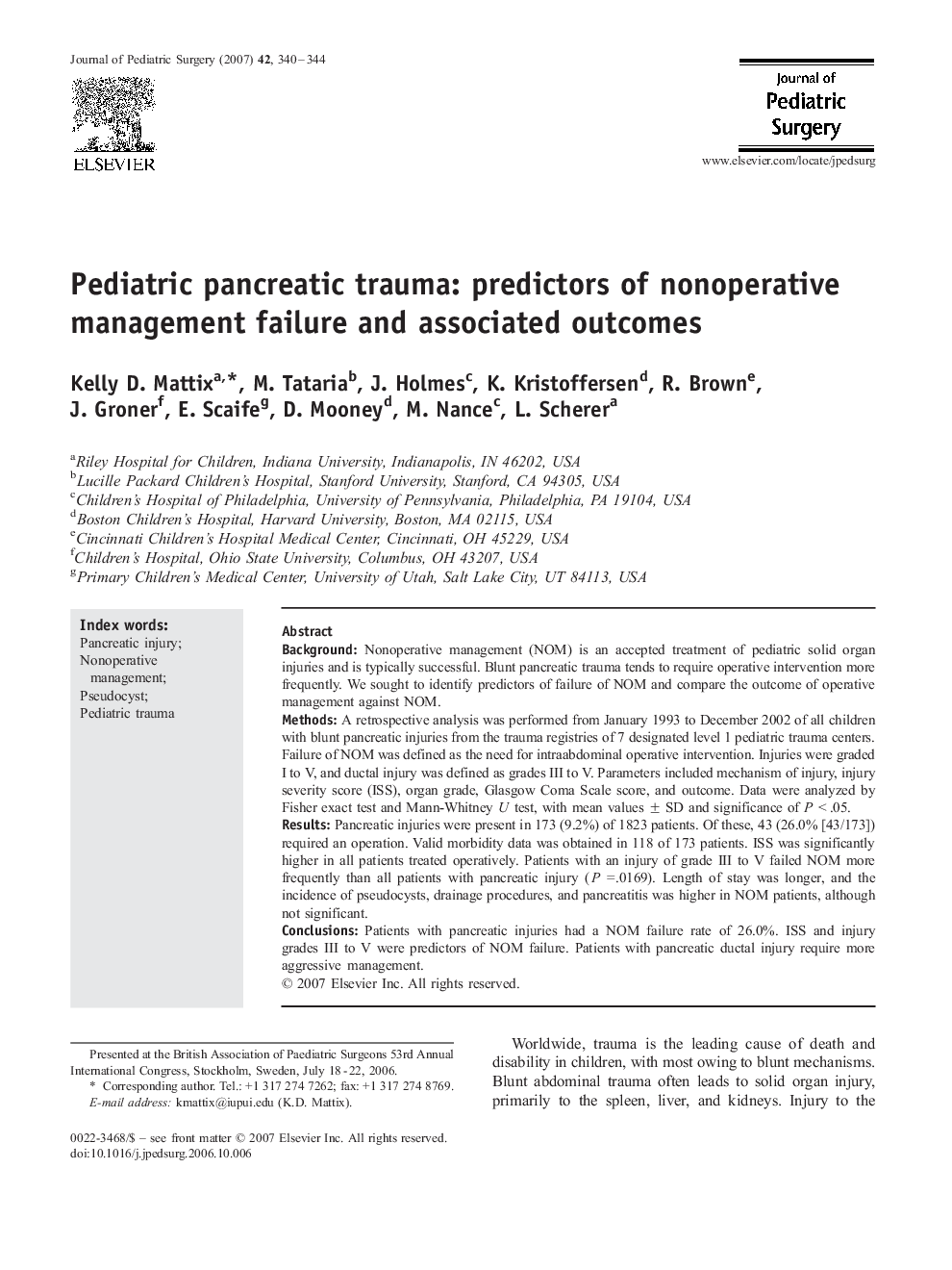| Article ID | Journal | Published Year | Pages | File Type |
|---|---|---|---|---|
| 4160552 | Journal of Pediatric Surgery | 2007 | 5 Pages |
BackgroundNonoperative management (NOM) is an accepted treatment of pediatric solid organ injuries and is typically successful. Blunt pancreatic trauma tends to require operative intervention more frequently. We sought to identify predictors of failure of NOM and compare the outcome of operative management against NOM.MethodsA retrospective analysis was performed from January 1993 to December 2002 of all children with blunt pancreatic injuries from the trauma registries of 7 designated level 1 pediatric trauma centers. Failure of NOM was defined as the need for intraabdominal operative intervention. Injuries were graded I to V, and ductal injury was defined as grades III to V. Parameters included mechanism of injury, injury severity score (ISS), organ grade, Glasgow Coma Scale score, and outcome. Data were analyzed by Fisher exact test and Mann-Whitney U test, with mean values ± SD and significance of P < .05.ResultsPancreatic injuries were present in 173 (9.2%) of 1823 patients. Of these, 43 (26.0% [43/173]) required an operation. Valid morbidity data was obtained in 118 of 173 patients. ISS was significantly higher in all patients treated operatively. Patients with an injury of grade III to V failed NOM more frequently than all patients with pancreatic injury (P =.0169). Length of stay was longer, and the incidence of pseudocysts, drainage procedures, and pancreatitis was higher in NOM patients, although not significant.ConclusionsPatients with pancreatic injuries had a NOM failure rate of 26.0%. ISS and injury grades III to V were predictors of NOM failure. Patients with pancreatic ductal injury require more aggressive management.
